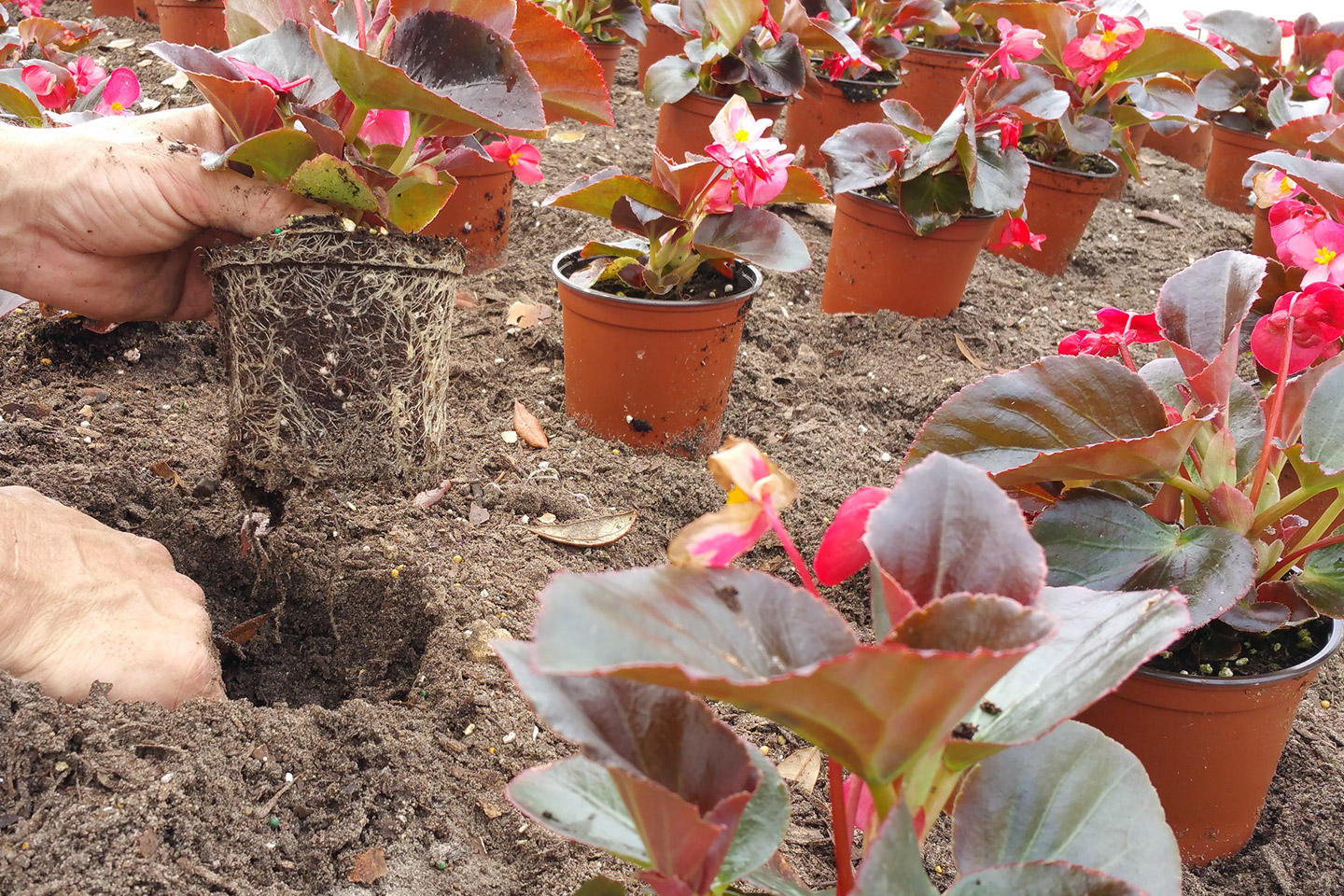Specific Palm Disease Management - Sabal Palm Decline - Sit Down with CEPRA
 Palms are a key part of making Florida the tropical paradise seen in movies and post cards. Their long, sleek trunks topped with a crown of bushy fronds are synonymous with beach vacations and warm weather. Many Floridian communities rely on palm trees to achieve that easygoing feeling in their neighborhoods, and install them abundantly throughout. With much of a neighborhood's appeal - both aesthetically and financially - tied up in palm trees, the community leaders have a vested interest in protecting their palm assets.
Palms are a key part of making Florida the tropical paradise seen in movies and post cards. Their long, sleek trunks topped with a crown of bushy fronds are synonymous with beach vacations and warm weather. Many Floridian communities rely on palm trees to achieve that easygoing feeling in their neighborhoods, and install them abundantly throughout. With much of a neighborhood's appeal - both aesthetically and financially - tied up in palm trees, the community leaders have a vested interest in protecting their palm assets.
Among them, the sabal palm is the most used palm in landscape developments. This is because sabal palms are considered "tried and true" plants and most likely to successfully transplant and thrive. Sabal palms, Florida's state palm, are known for their abundance and hardiness. While they typically thrive without much interference, unfortunately, sabal palms have recently been afflicted with a disease known as Sabal Palm Decline. With this new disease threatening our beautiful palms, understanding the factors that attribute to its contagion to is crucial to keeping their health - and the health of the entire landscape - performing at its best.
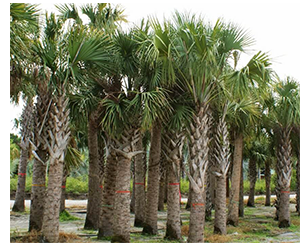
What is Sabal Palm Decline?
Recent investigations have uncovered that sabal palms are suffering from a variance of lethal bronzing. Similar to the disease found afflicting date palms, this disease is transmitted through the bite of tiny insects known as planthoppers. These insects act as a vector for a type of bacteria called phytoplasma.
This disease first appears in the lower foliage, causing the tips to brown. This discoloration slowly travels upward, both from the tip to the base of the leaf blade, and from the bottom array of fronds to the top of the crown. The result is a sabal palm that essentially looks freeze-dried.
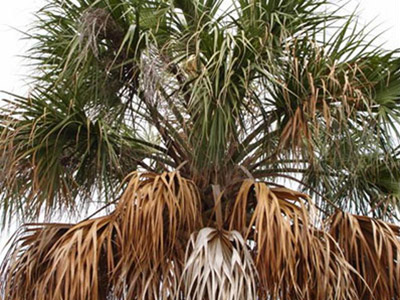
A Sabal Palm showing discoloration on the bottom fronds commonly associated with Sabal Palm Decline.
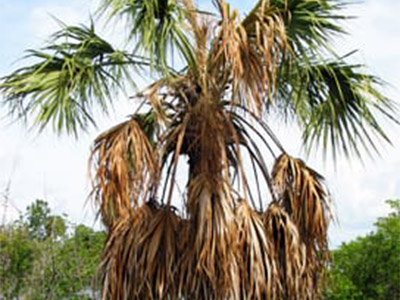
The leading frond in the crown appears brown, another indicator of Sabal Palm Decline.
Can Sabal Palm Decline Be Treated?
There are currently no known cures to Sabal Palm Decline. The only remedy is to ensure the health and vigor of the palm at the time of installation and maintenance. If a palm tests positive for the lethal bronzing pathogen, it should be removed immediately. Neighboring palms should also be tested.
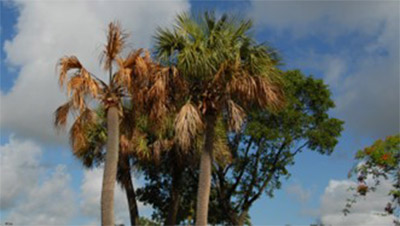
As palms are generally planted in groups, be sure to get all neighboring palms tested for Lethal Bronzing Disease should a declining palm test positive.
Factors Affecting Palm Health
Certain conditions are more likely attributed to a palm's decline. Over-pruning is an issue because it removes fronds that are naturally browning, and makes Sabal Palm Decline more difficult to detect. Ideally, only prune fronds that are entirely brown, as yellow fronds still have nutrients for the palm to access. Avoid "hurricane cuts" as much as possible, and opt of a 9-3 o'clock cut. Another issue is planting the palm too deep. Palms should be planted with about 10% of the root ball above ground. This allows the palm to properly establish to its new terrain. Be wary of certain nutritional conditions that appear similar to the early onset of Sabal Palm Decline, such as potassium deficiency, which also turns the fronds yellow to brown. Palms should be monitored regularly as part of the community association's landscape maintenance plan to ensure health and vigor, and offer timely adjustments to the nutrition plans as needed.
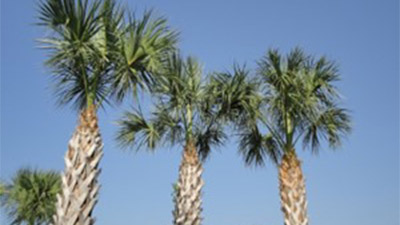
Examples of over-pruned palms.
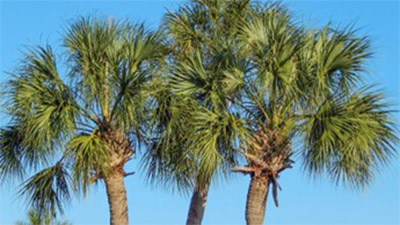
Examples of palms pruned at 9-3 o'clock positions.
Other Common Landscape Palms
While sabal palms are the most commonly used palms, sometimes, they just won't work for a space. Luckily, there are a variety of palm trees utilized in community development. These trees are installed based on the aesthetics and maintenance capabilities of the community, budget, size needed, and of course, the planting zone. Some of the more common palms used in Florida landscapes are:
- Bismarck
- Canary Island Date
- Chinese Fan
- Christmas
- Coconut
- Fishtail
- Foxtail
- Medjool Date
- Pygmy Date
- Queen
- Ribbon Fan
- Royal
- Sylvester
- Washington
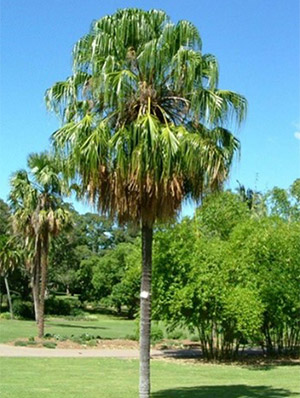
Ribbon Fan Palm.
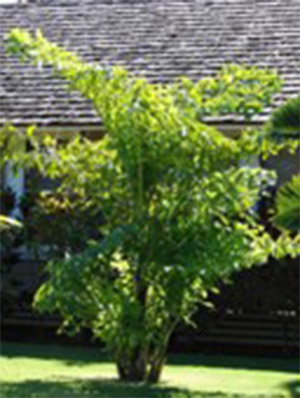
Fishtail Palm.
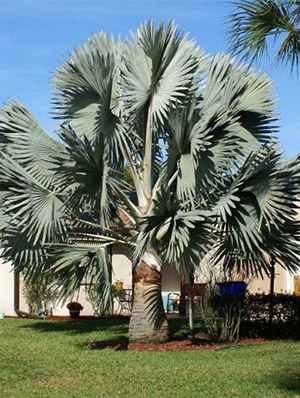
Bismarck Palm.
Conclusion
A relatively new disease, Sabal Palm Decline is causing the staple palm of Florida to be at risk. As sabal palms are typically incredibly resilient, the recent and devastating toll on these plants is unusual. Understanding the conditions that foster unhealthy palms, and steps to take to ensure their success, are crucial for a healthy landscape.
